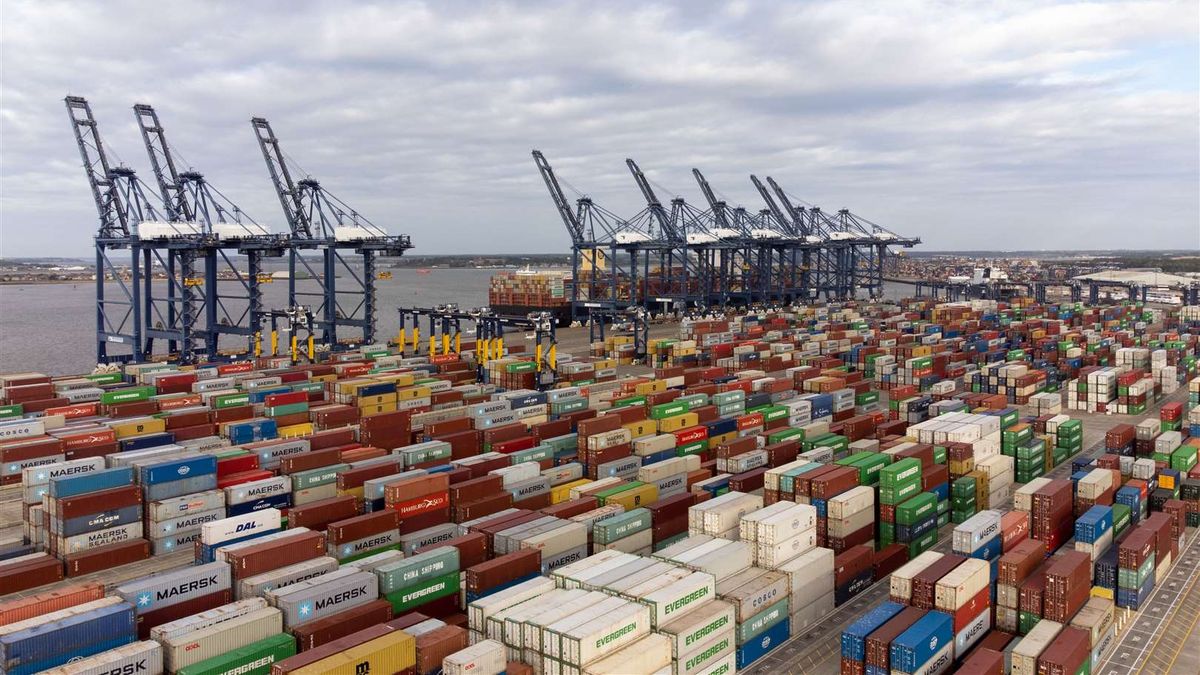The General Director, Ngozi Okonjo-Iweala, declared: «I am deeply concerned about uncertainty about commercial policy, including stagnation between the United States and China. The recent reduction of tariff tensions has temporarily relieved part of the pressure on world trade. However, persistent uncertainty threatens to stop world growth, with serious negative consequences for the world, particularly for the most vulnerable economies. ”
Next, calls WTO members by saying: “They have the unprecedented opportunity to boost the organization, promote equal conditions, expedite decision making and adapt our agreements to better respond to current world realities. ”
At the beginning of the year, the WTO Secretariat provided for a Continuous expansion of world trade in 2025 and 2026with a growth of merchandise trade in line with world GDP and a faster increase in trade in commercial services.
However, the large number of new tariffs introduced since January promoted WTO economists to reassess the commercial situation, which resulted in a substantial reduction in its prognosis for merchandise trade and a lower reduction in their perspective for the trade of services.
PAUSE
Temporary tariff pause mitigates trade contraction, but there is still strong risks of deterioration
Under current conditions, the volume of world trade in goods is likely to decrease 0.2% in 2025. The decrease is expected to be particularly accused in North America, where exports are forecast to fall by 12.6%.
However, there are serious risks of deterioration, such as the application of “reciprocal” tariffs and broader indirect effects of uncertainty in policies, that could lead to an even more pronounced decrease – 1.5% – in world merchandise trade and harm the less advanced countries oriented to export.
The volume of the trade trade is expected to grow 4.0% in 2025, around 1 percentage point less than expected.
To promulgate reciprocal tariffs current World merchandise trade volume at 0.6 percentage points in 2025, while the propagation of the uncertainty of commercial policy could cut another 0.8 percentage points, which raises particular risks for less advanced countries (PMA).
Together, reciprocal tariffs and the propagation of the uncertainty of commercial policy would lead to a 1.5% decrease in world merchandise trade in 2025.
The recent tariff disturbances follow a strong year for the World Trade in 2024, where merchandise trade grew 2.9% and trade in commercial services increased by 6.8%.
Meanwhile, world GDP weighted by the market grew by 2.8%, which makes 2024 the first year since 2017 (excluding the rebound from the Covid-19 Pandemia) in which The merchandise trade grew faster than production.
The value in US dollars of World merchandise exports in 2024 increased 2% to 24.43 billion US dollarsincluding trade within the European Union.
Some points to highlight the World Trade Organization Report:
- China was the largest exporter (3.58 billion US dollars), while the United States remained the largest importer (3.36 billion US dollars).
- The European Union was the second largest merchant both on the side of exports (2.80 billion US dollars) as on the side of imports (2.63 billion US dollars).
- Services: The value of World Services Exports Commercial in 2024 increased 9% to 8.69 billion US dollars. The United States was both the largest exporter (1.08 billion US dollars) Like the biggest importer (787 billion US dollars).
- However, if the European Union as a single entity, its trade with the rest of the world was MayR (1.64 billion US dollars in exports and 1.44 billion US dollars in imports).
The prospects for world trade have deteriorated drastically due to the increase in tariffs and the uncertainty of commercial policy (TPU).
Based on the measures in force to April 14, including the suspension of the “reciprocal tariffs” by the United States, The volume of world merchandise trade is expected to decrease 0.2 % by 2025 before registering a modest recovery of 2.5 % in 2026.
The new estimate for 2025 It is almost three percentage points lower than what would have been without the recent policy changes And marks a significant change of course with respect to the beginning of the year, when WTO economists hoped to see a commercial expansion continued supported by the improvement of macroeconomic conditions.
Image (2) .png
Forecasts
The impact of recent changes on commercial policy varies considerably between regions.
- North America now 1.7 percentage points of world merchandise trade in 2025which makes the general figure negative.
- Asia and Europe They continue to contribute positively, but less than on the base stage, with the contribution of Asia reduced by half, to 0.6 percentage pointss.
- The combined contribution of other regions (Africa, the community of independent states (CEI), including some associated states and former members, the Middle East, and South America, Central America and the Caribbean) It also decreases, but it is still positive.
- The disruption in trade between the United States and China is expected to cause significant deviation of trade, which generates concern in third markets for greater Chinese competition.
- It is projected that Chinese exports of goods increase between 4% and 9% in all regions outside North America, as trade is redirected.
- At the same time, a strong fall in US imports from China is expected in sectors such as textile, preparation and electrical equipment, which will generate new export opportunities for other suppliers capable of covering the demand.
- This could facilitate the Increase in exports from some less advanced countries (PMA) to the US market.
- It is also expected that The services trade, although not directly subject to tariffs, is negatively affected.
- Falls in the trade of goods, induced by tariffs, They weaken the demand for related services, such as transport and logistics, while general uncertainty slows discretionary spending on trips and slows investment -related services.
REDUCTION
- As a result, the global volume of the Commercial services trade grows 4.0% in 2025 and 4.1% in 2026, well below the reference projections of 5.1% and 4.8%.
- WTO economists They expect world GDP to market exchange rates to grow 2.2 % in 2025 (0.6 percentage points below the reference value without tariff changes) before recovering slightly to 2.4 % in 2026.
- Tariff changes are expected to have the greatest impact in North America (-1.6 points percentage),
- Asia a reduction of 0.4 points.
- South America, Central America and the Caribbean (-0.2 points).
While the imposition of reciprocal tariffs would have a limited effect on the global figure, greater generalized uncertainty about commercial policy It could almost double the loss of GDP, up to 1.3 percentage points with respect to the reference value.
PERFORMANCE
The recent deceleration of commercial perspectives occurs after a solid performance in 2024, When the volume of world merchandise trade grew 2.9 % and trade of commercial services expanded 6.8 %.
With an increase in global GDP of 2.8 % to market exchange rates, it was the first year since 2017 – existing postpandemic recovery – in which the growth of merchandise trade exceeded production.
In terms of value, World goods exports increased by 2 %, to 24.43 billion US dollars, indicating a decrease in average prices of export and import.
Commercial services exports increased 9 %, to 8.69 billion US dollars, reflecting a strong demand in various sectors.
Source: Ambito




